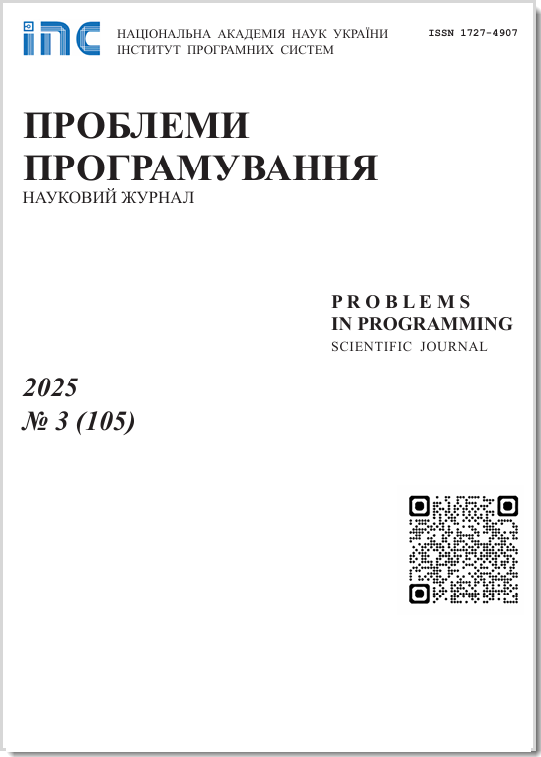Simulating of human physiological supersystems: integrative function of organs supporting cell life
Abstract
A quantitative model of fluids’ dynamics (MFD) in the human body is created. Initially, MFD was realized as an autonomous C# software module (SM) functioning under given dynamic input characteristics. Later, SM was incorporated into our special software-modeling tool (SMT) capable of simulating the main modes of the human physiological super-system (PSS) providing cells' life. MFD describes mechanisms regulating long-term blood, lymph, total cells’, and intercellular volumes. SMT simulates both intracellular and multicellular mechanisms providing cell energy balance despite casual dynamics of energy consumption rate. Multicellular mechanisms include complex systems controlling systemic and regional hemodynamics, interaction of the liver with the pancreas, blood filtration in kidneys, bladder function, and liquid expirations in lungs and skin in the background of a dynamic external environment. The latter is a gas atmosphere with altering pressure, illumination, temperature, humidity, and wind speed. Models have been tested using algorithms that design scenarios, including simulation of either short-time or long-time (hours or days) observations. Input data include different combinations of internal and external parameters including osmotic, and oncotic pressures. Output data include the main parameters characterizing organs and life support systems. Both student-medics and physiologists interested in providing theoretical research can be users of SM.
Prombles in programming 2024; 4: 77-88
Keywords
Full Text:
PDFReferences
Grygoryan R.D. Extending the understanding of health mechanisms: inverse relationships between worsening of cells' metabolism and arterial pressure. Znanstvena misel journal, 2024, 89, 35-43. Slovenia. 10.5281/zenodo.11049497.
Crystal G. J., Assaad S. I., Heerdt P.M. 24 - Cardiovascular Physiology: Integrative Function, Ed(s): Hugh C. Hemmings, Talmage D. Egan, Pharmacology and Physiology for Anesthesia (Second Edition), Elsevier, 2019, 473-519, ISBN 9780323481106, CrossRef
Eirin A, Lerman A, Lerman LO. Enhancing Mitochondrial Health to Treat Hypertension. Curr Hypertens Rep. 2018;20,10,89. CrossRef
Grygoryan R.D., Sagach V.F. The concept of physiological super-systems: New stage of integrative physiology. Int. J. Physiol. and Pathophysiology, 2018: 9,2,169-180. CrossRef
Grygoryan R.D. The optimal circulation: cells contribution to arterial pressure. N.Y.: Nova Science,2017: 287p. ISBN 978-1-53612-295-4.
Grygoryan R.D. The Optimal Coexistence of Cells: How Could Human Cells Create The Integrative Physiology. J. of Human Physiol. 2019,1 (01):8-28. 10.30564/jhp.v1i1.1386.
Grygoryan R.D. Problem-oriented computer simulators for solving of theoretical and applied tasks of human physiology. Problems of programming. 2017, №3, 102-111.
Grygoryan R.D., Yurchak O.I., Degoda A.G., Lyudovyk T.V. Specialized software for simulating the multiple control and modulations of human hemodynamics. Prombles of programming. 2021; 2: 42-53. CrossRef
Grygoryan R.D., Degoda A.G., Lyudovyk T.V., Yurchak O.I. Simulations of human hemodynamic responses to blood temperature and volume changes. Prombles of programming. 2023; 1: 19-29. CrossRef
Grygoryan R.D. Modeling of mechanisms providing the overall control of human circulation. Advances in Human Physiology Research, 2022,4,5 - 21. CrossRef
Grygoryan R.D., Degoda A.G., Lyudovyk T.V., Yurchak O.I. Simulating of human physiological supersystems: interactions of cardiovascular, thermoregulatory and respiratory systems. Problems of programming. 2023, №3, Р. 81-90. CrossRef
Shibuya M. Vascular endothelial growth factor and its receptor system: physiological functions in angiogenesis and pathological roles in various diseases, The Journal of Biochemistry, 2013,153, 1, 13 -19. CrossRef
Camarda N, Travers R, Yang VK, London C, Jaffe IZ. VEGF receptor inhibitor-induced hypertension: emerging mechanisms and clinical implications. Curr Oncol Rep. 2022; 24:463-474. CrossRef
Thomas S.R. Mathematical models for kidney function focusing on clinical interest. Morphologie, 2019, 103, Issue 343, 161-168. CrossRef
Sgouralis I, Layton AT. Mathematical modeling of renal hemodynamics in physiology and pathophysiology. Math Biosci.2015;264:8-20. CrossRef
Weinstein, A. M. Mathematical models of renal fluid and electrolyte transport: acknowledging our uncertainty. American Journal of Physiology - Renal Physiology. 2003, 284, 871-884. CrossRef
Hardie D.G. Keeping the home fires burning†: AMP-activated protein kinase. J. of The Royal Society Interface. 2018,138. CrossRef
DOI: https://doi.org/10.15407/pp2024.04.077
Refbacks
- There are currently no refbacks.









